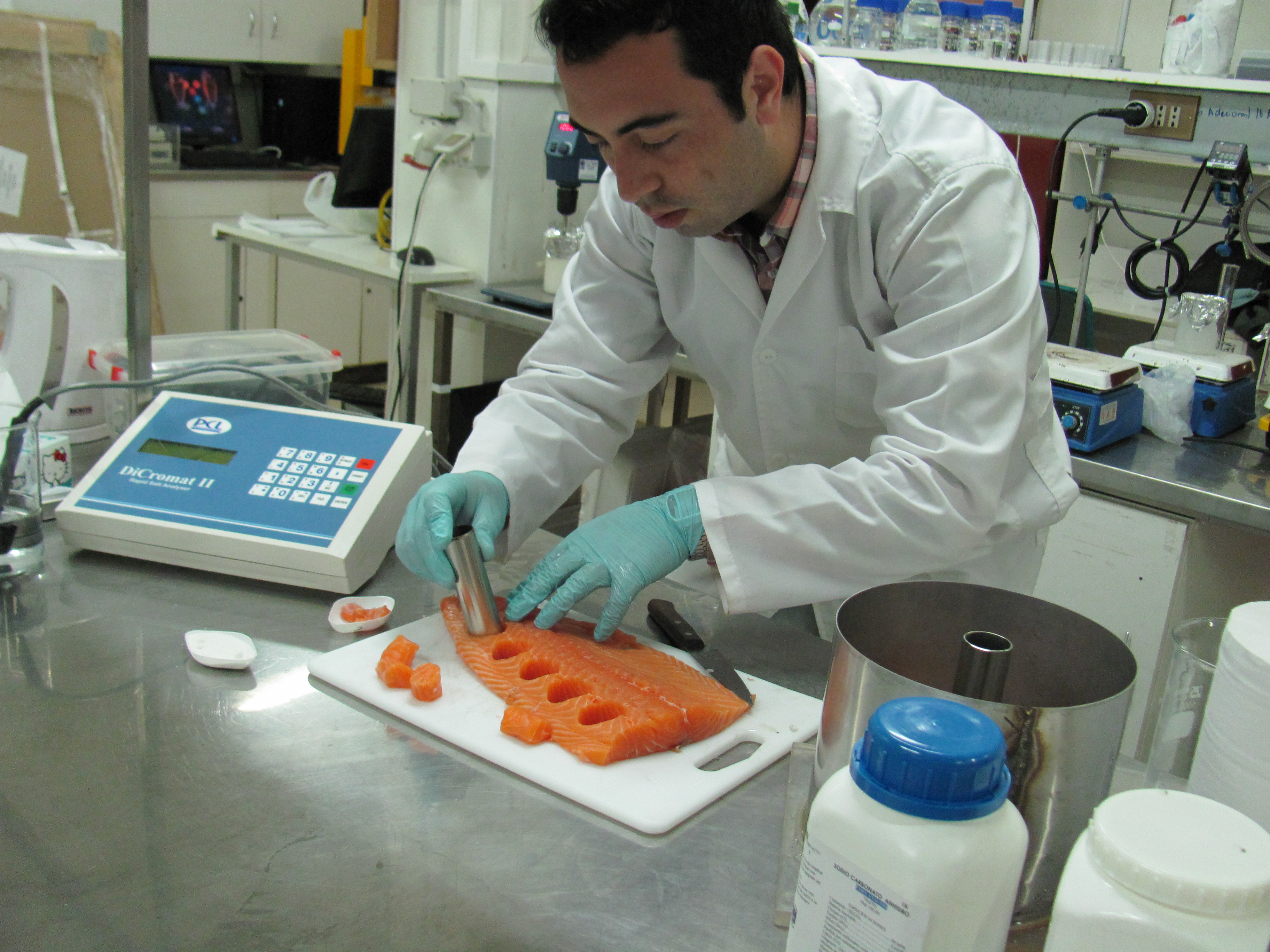Gabriel Cavada, Nicolás Quiroz, Ricardo Simpson.
JI3 2016, number 7, pages 90-97.
Abstract
Salmon sales ranked second in the exports of our country for 2014, with more than US$3,655 million. Salted products account for a significant percentage of exports of the different salmon products. The salting process is intended for extending the shelf life and improving organoleptic properties. However, despite the beneficial traits provided by this process, this technique has the disadvantage of taking excessive processing times. The goal of this research is to study the effect of applying Ohmic Heating (OH) in the salting time for Atlantic salmon. For experimentation, salmon samples were cut in small cylindrical bits and were salted by dipping them in a salt solution for 24 hours. This procedure was replicated to different brining concentrations (6%, 15%, 18% and 24% NaCl) with or without Ohmic Heating. The process was controlled at 15 °C with 5 Volts for 24 hours, samples were weighed and salt concentration was measured at different processing times. The color and texture were measured at the beginning and end of each experiment. The results show that Ohmic treatment does not affect the phenomenology of the salting kinetics. However, an acceleration was detected in the salting process for samples treated by OH. Color and texture testing did not show significant differences. For water retention, the only samples that showed a weight decline were those that were dipped in brine at 24%, while for other concentrations, OH treatment resulted in an increase in the mass of every sample against the tests performed without OH.
